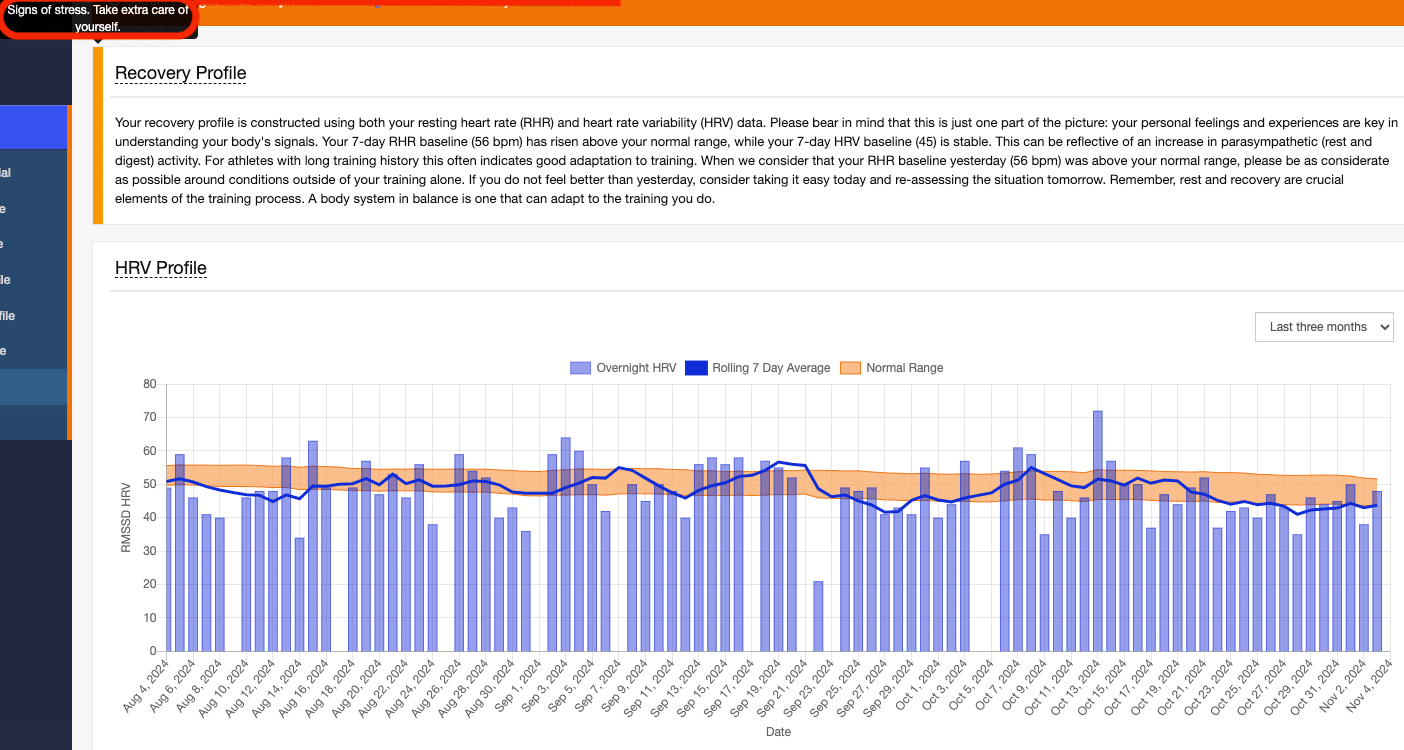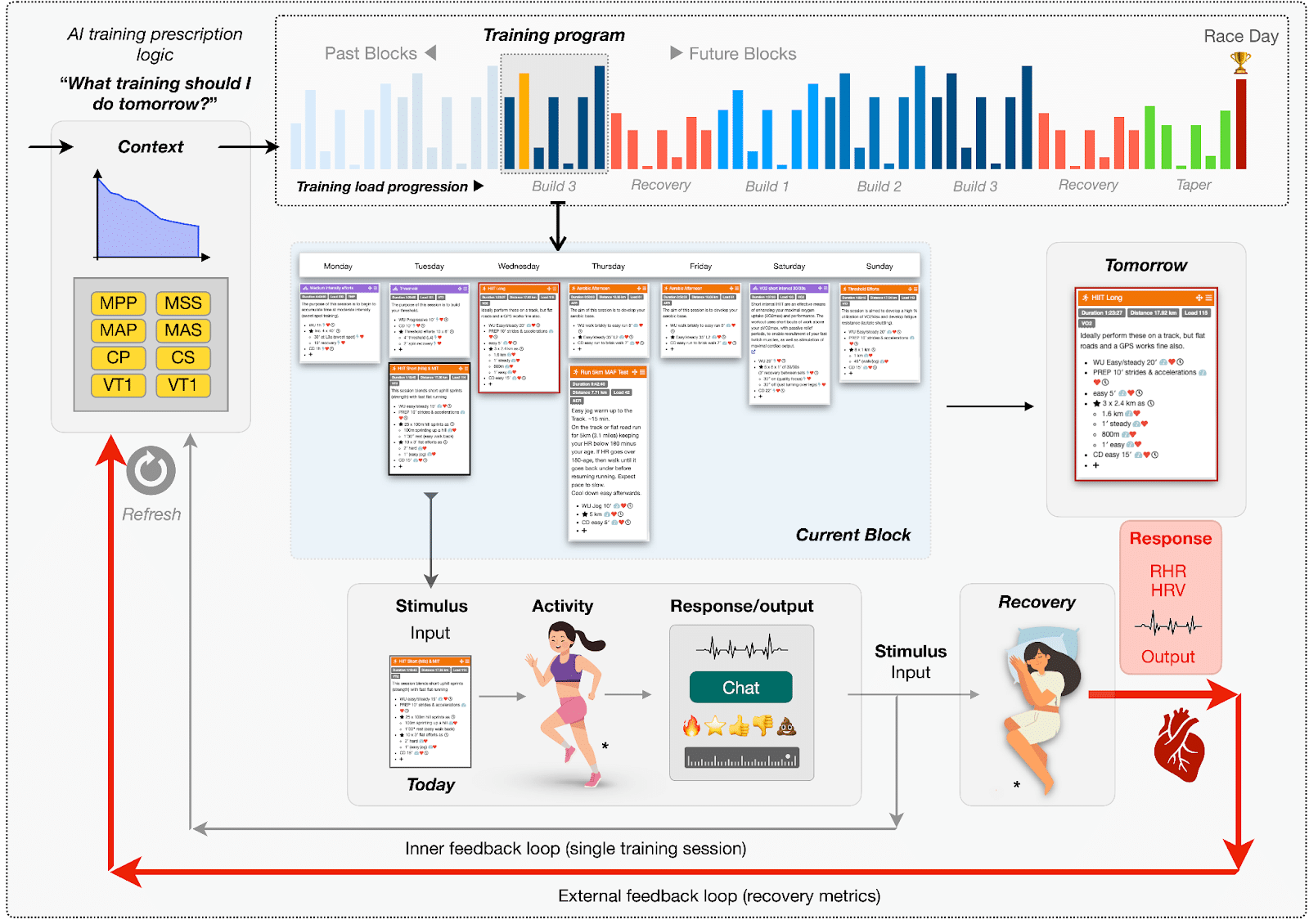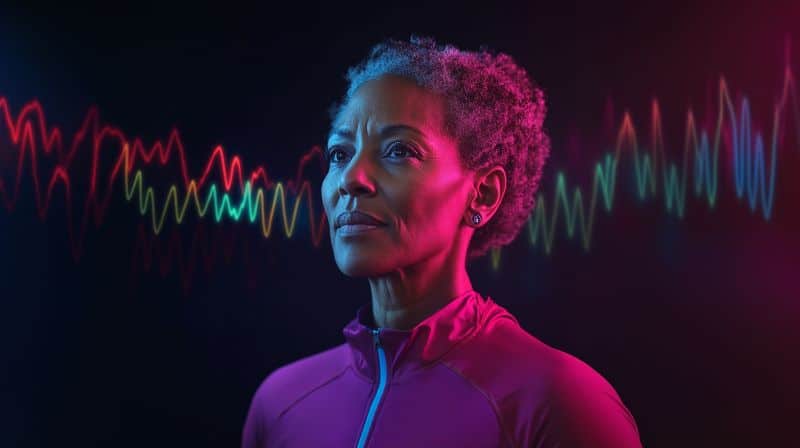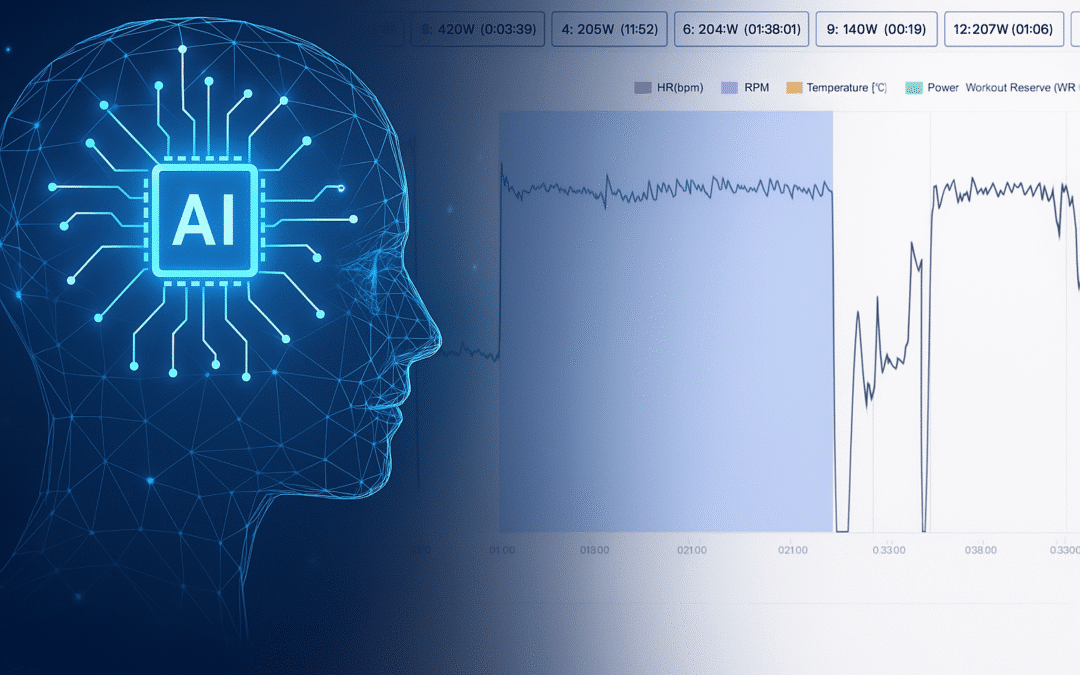To maximize an athlete’s performance potential, we need to understand how their body responds to each session—and adapt accordingly. Heart Rate Variability (HRV) has emerged as one of the most powerful and insightful indicators of how your body is handling training stress and recovery. Athletica’s latest breakthrough is an AI-assisted HRV system, designed to make sense of your data in a way that’s practical, actionable, and individualized.
Athletica has a rich history in this space. When Dan Plews began his PhD under the supervision of Martin Buchheit and Paul Laursen in 2011, HRV showed promising potential as a key monitoring variable, and they took a chance on exploring its utility in high-performance settings. Sure enough, HRV emerged as a reliable marker for adaptation to training stress (Plews et al., 2013).
But to this day, HRV can still feel complicated. Wouldn’t it be nice to have something that analyzes the data for you and gives you a clear go-ahead— and while adjusting your training plan accordingly?
Recently published in Sport Performance & Science Reports as the first paper in the new Sports Science 3.0 series, our AI-driven HRV system is a leap forward in interpreting athlete readiness and response to training. Here’s what it means for you and how it can be used in your day-to-day practice.
Why HRV Matters for Your Training
As per our prior blog on the topic, higher HRV generally means your body is well-recovered and ready for action, while lower HRV can signal fatigue or stress. Traditionally, HRV data has been collected and analyzed, but interpreting it meaningfully—especially for day-to-day training adjustments—has remained challenging. Even more challenging was to seamlessly adjust future training sessions based on HRV-related considerations. Analyzing, interpreting and synthesizing different data requires a deep knowledge of sports and data science. That’s where Athletica’s AI comes in. Athletica does the hard work of explaining the data and making it actionable, so you can devote more time to training smarter, not harder.
The First Step: AI-Assisted Recommendations with Our Traffic Light System
We’ve integrated AI to provide real-time HRV-based recommendations. Think of it as a “traffic light” readiness system:
🟢 Green: You’re ready to train—no significant signs of fatigue.
🟡 Yellow: Your body is experiencing mild stress; be mindful of intensity.
🟠 Orange: Moderate fatigue detected; consider a lighter session or recovery day.
🔴 Red: High fatigue levels; rest is strongly recommended.
With this system, Athletica users now have a daily, science-backed indicator of training readiness—straightforward, actionable, and ready to guide you toward the right type of session each day.
Making HRV Data Meaningful in Sports Science 3.0
By applying AI-based analysis and the foundational principles of Sports Science 3.0, Athletica’s system goes beyond simply displaying HRV numbers. We’re offering insights into what those numbers mean for your unique training needs, using HRV and RHR (Resting Heart Rate) to provide a comprehensive view of readiness.
Our approach is guided by principles laid out in our latest research, where we show that response-guided training can optimize training loads based on real-time physiological signals. While our AI already provides daily readiness recommendations, we’re hard at work on integrating dynamic training adjustments based on this data.
A Sneak Peek: How Our AI Works Behind the Scenes
Curious about what’s happening under the hood? The AI model behind Athletica’s HRV system is built to understand how your HRV and RHR fluctuate over time, recognizing patterns that indicate when your body is ready to train hard—and when it needs rest. Our approach is both rigorous and practical, combining years of research and data processing techniques to interpret HRV data in ways that matter.
The result? A system that’s not only deeply informed by the science of HRV but also optimized to give you clear, actionable insights tailored to your personal data. Below, you’ll see an example of an athlete showing signs of fatigue and how they can take action to stay healthy.

Figure 1. Example of an athlete showing signs of reduced readiness to train, as evidenced by the lower 7-day average (blue line) relative to the 60-day average values (red band) of HRV. Notice the orange band, indicating moderate fatigue and recommendations for a lighter session or recovery day. This helps keep the athlete healthy and training consistently.
What’s Next? The Future of Response-Guided Training
Our current AI system, shown in Figure 1, delivers individualized recommendations to guide your daily training choices. But we’re not stopping there. In line with our Sports Science 3.0 vision, we’re actively developing dynamic load adjustments—a feature that will automatically tailor your training based on your body’s day-to-day responses.

Figure 2: Schematic Representation of an HRV-Guided Training Plan Generator
This flowchart illustrates the process of generating a training plan, where lines and arrows represent the flow of information. The core question the system addresses is: “What training should I do tomorrow?” To answer this, the generator builds the training program based on supercompensation principles while factoring in constraints such as time availability and total training volume. The plan is highly context-dependent. Particular attention has to be devoted here to the red arrows and lines, those connecting the information retrieved from your recovery metrics (heart rate variability HRV and resting heart rate RHR) to the training generation logic.
Stay tuned as we continue to innovate and bring you more advanced tools for managing your training and recovery. In the meantime, dive deeper into the science by checking out our recent publication in Sport Performance & Science Reports and explore the insights that are shaping the future of athlete monitoring.
Ready to Train Smarter?
At Athletica, we believe in empowering athletes with tools and insights that make training smarter, not harder. With AI-assisted HRV monitoring, you can make better-informed decisions every day, building a foundation for long-term performance gains. Start exploring your readiness today and experience the difference that Sports Science 3.0 can make.
Key Takeaways
Athletica’s AI-assisted HRV system provides a “traffic light” readiness indicator for training adjustments.
Built on Sports Science 3.0 principles, the system interprets HRV and RHR data to offer tailored, actionable insights.
Our vision includes fully dynamic load adjustments to help athletes continuously optimize their training.
#SportsScience30 #HRV #AthleteReadiness #AIinSports #PersonalizedTraining #AthleticaAI
References
Plews, D. J., Laursen, P. B., Stanley, J., Kilding, A. E., & Buchheit, M. (2013). Training adaptation and heart rate variability in elite endurance athletes: opening the door to effective monitoring. Sports medicine, 43, 773-781.
Zignoli, A, Plews D.J., Laursen, P.B., & Buchheit, M. (2024). AI-Assisted HRV Monitoring: Enhancing Training Load Response and Decision-Making. Sports Performance & Science Reports. November | 241 sportperfsci.com.






